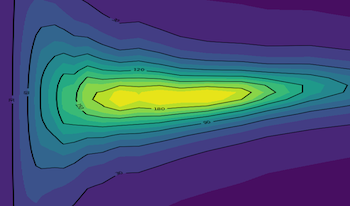
In this preliminary work we created a database of ten images representative of typical digital photographic imagery, and evaluated both the Birkhoff and Eysenck aesthetic measures, M, for each. We then used the methodology of Liu et al. to assess a compositional figure of merit, EA, for each of the test images. We found a significant correlation between EA and entropy, which implies a commonality between informational and compositional features of an image. The images were then presented to a panel of experienced observers from the arts community, and a rank order for aesthetic merit was determined from their evaluations. Although the rank order correlated weakly with the Eysenck aesthetic measure, a much stronger correlation was observed with the compositional metric characterizing adherence of the composition of the image to the rule of thirds, suggesting that adherence of the composition to the rule of thirds dominates sophisticated observers intuitive apprehension of the aesthetic value of the image. These results render problematical the attempt to establish an exclusively information theory-based aesthetic measure.

Image sharpness is strongly dependent on lens aperture and camera position at capture. As high-end equipment is out of the reach of many museums, these choices are often mostly based on visual evaluations of image sharpness, which—though still possibly resulting in good quality images—is highly subjective and can lead to inconsistency. In the context of a broader effort to provide low-cost solutions for consistent high-quality museum photography, we propose a methodology for the characterization of the performance of a lens in terms of sharpness that enables the selection of the appropriate lens aperture and camera position for the capture of a sharp image of an object without the need for expensive equipment.

This paper considers how digitisation can be mobilized by museums as a tool of both photographic preservation and access by placing the materiality of its objects at the fore. Using the digitisation workflow of the acetate negatives in the Berenice Abbott Archive at the Ryerson Image Centre this paper will address these concerns. First, this paper will describe the material aspects of Abbott’s acetate negatives, and the preservation issues in the collection. Second, it will describe the monitoring of vinegar syndrome present in the collection and the development of a digitisation workflow based on acetic acid off-gassing and the development of a priority sequence. Third, this paper will demonstrate how digitisation can be used to preserve and provide access to the object, its condition, and the image without sacrifice.